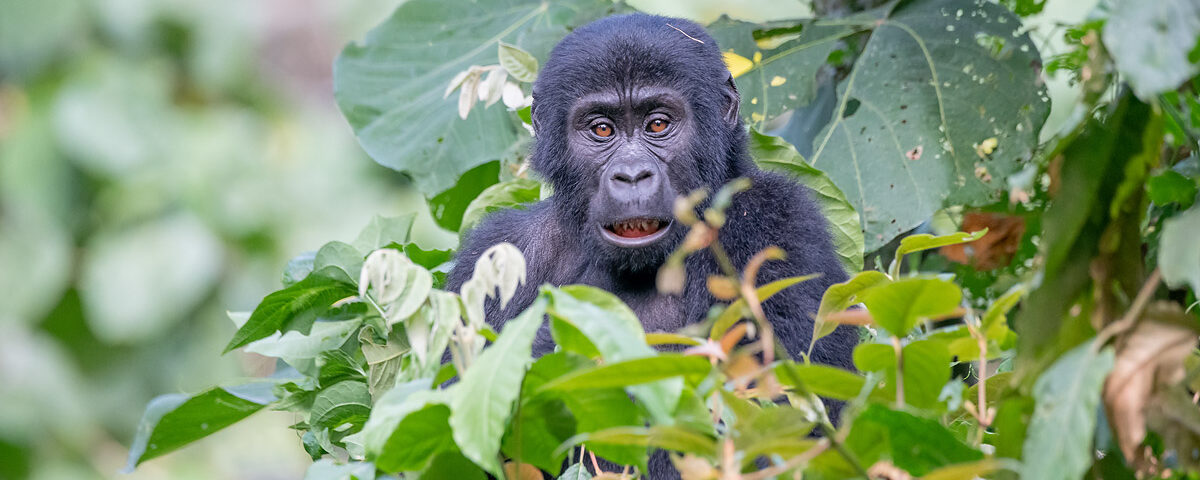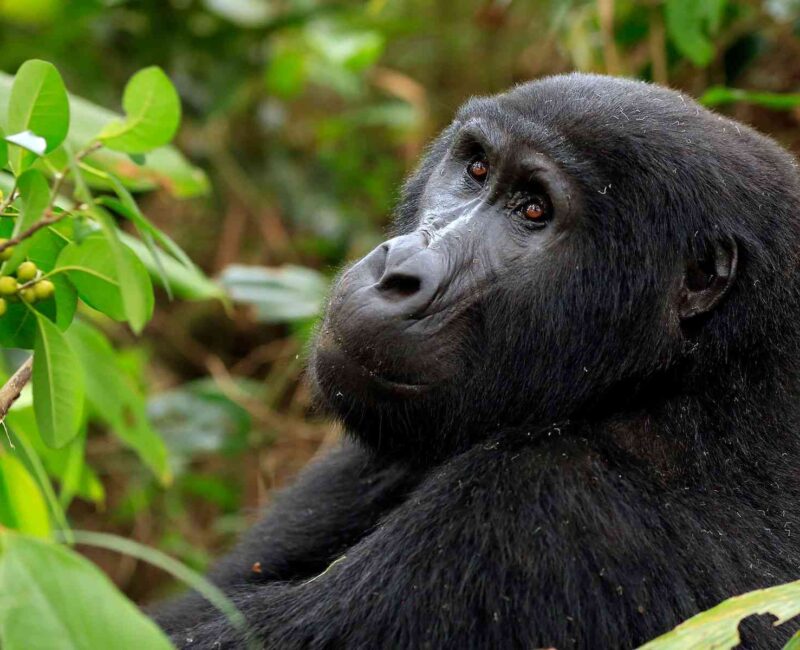
Is Gorilla Trekking in Uganda Safe?
May 5, 2025
What is the Difference Between Gorilla Trekking and Gorilla Habituation?
May 5, 2025What is the Best Time to Go Gorilla Trekking in Uganda?
When planning your ultimate wildlife safari or primate adventure in East Africa, one question stands out—What is the best time to go gorilla trekking in Uganda? This key question is at the heart of many Uganda safari inquiries, especially for travelers seeking a life-changing experience with mountain gorillas. Nestled within the misty highlands of southwestern Uganda lies Bwindi Impenetrable National Park and Mgahinga Gorilla National Park—both prime destinations for Uganda Gorilla Trekking.
These parks offer a remarkable chance to witness endangered mountain gorillas in their natural habitat, supported by a robust conservation program and guided by well-trained rangers. While gorilla trekking is possible year-round, seasonal variations affect the experience, especially in terms of weather, trail conditions, and gorilla movement patterns. For those combining gorilla trekking in Uganda with chimpanzee tracking, cultural experiences, or a broader wildlife safari, choosing the optimal time ensures a rewarding and memorable adventure.
At EcoQuest Safaris, we specialize in crafting tailor-made Uganda and Rwanda safari packages, helping travelers get the most out of their gorilla trekking Rwanda and Uganda Gorilla Trekking experiences. This article explores the best times to visit, while also providing essential tips on planning your trip and extending your safari with other exceptional activities across East Africa.
Dry Seasons: The Ideal Months for Uganda Gorilla Trekking
Peak Seasons: June to September and December to February
The most recommended time for gorilla trekking in Uganda is during the dry seasons—from June to September and December to February. These months are widely considered the best time to go gorilla trekking in Uganda due to the relatively stable weather. Trails are less slippery, visibility is excellent, and forest undergrowth is reduced, making it easier to follow gorilla trails and enjoy unobstructed views of these gentle giants.
This period also coincides with the peak tourist season, so it’s advisable to book your Uganda Gorilla Trekking permits and accommodation well in advance. The Uganda Wildlife Authority only issues a limited number of gorilla permits per day per habituated family, making early booking essential. At EcoQuest Safaris, we handle all permit arrangements, lodge reservations, and logistics to ensure your trek is seamless and enjoyable.
Additionally, these months offer a great opportunity to combine your gorilla trekking in Uganda with other iconic activities like chimpanzee tracking in Kibale Forest National Park, wildlife safaris in Queen Elizabeth National Park, and cultural tours in regions such as Buhoma, Ruhija, and Kisoro. Whether you’re on a Rwanda tour or a cross-border itinerary, the dry season delivers unmatched experiences for photographers, wildlife lovers, and adventure seekers.
Rainy Seasons: Green and Quiet—A Hidden Gem for Gorilla Enthusiasts
Shoulder Months: March to May and October to November
While many travelers avoid the rainy season, these months offer unique advantages for the more adventurous spirit. The months of March to May and October to November are considered Uganda’s wet seasons. During these times, the forests of Bwindi and Mgahinga become lush, vibrant, and teeming with life. The scenery is breathtaking, and the rains bring out an array of flora and birdlife, adding depth to your trekking experience.
Although trails can be muddy and physically challenging, sightings of mountain gorillas remain consistent throughout the year. The wet season is also considered a low tourist season, which means fewer crowds on the trails and often discounted rates at lodges and camps. This quieter period may be the best time to go gorilla trekking in Uganda for travelers looking for solitude, savings, and a more personal encounter with nature.
It’s also an excellent time for combining Uganda Gorilla Trekking with chimpanzee tracking or birdwatching tours, particularly as Kibale and Semuliki National Parks become havens for migratory birds. Local cultural experiences such as Batwa village walks, community coffee tours, and traditional dance performances become even more engaging during the off-peak months, offering intimate and immersive interactions.
Regional Considerations: Bwindi vs. Mgahinga and How Climate Varies
Comparing the Gorilla Trekking Locations in Uganda
When considering what is the best time to go gorilla trekking in Uganda, it’s important to understand that Uganda has two gorilla trekking destinations: Bwindi Impenetrable National Park and Mgahinga Gorilla National Park. Both are part of the larger Virunga Conservation Area, but their climates and trekking conditions differ slightly.
Bwindi, with its rugged terrain and dense vegetation, offers over 20 habituated gorilla families across four main sectors—Buhoma, Ruhija, Rushaga, and Nkuringo. This variety provides more permit availability and flexible trekking options for visitors. Mgahinga, on the other hand, is home to one habituated family (Nyakagezi), and offers a more open, bamboo-dominated terrain, which some find easier to navigate.
In both parks, the dry season remains the preferred period for trekking. However, since gorilla movements are not hindered by the seasons, your chances of encountering them remain high year-round. Additionally, EcoQuest Safaris can help you combine your Uganda Gorilla Trekking in either park with a Rwanda safari, as Mgahinga is conveniently located near the Cyanika border with Rwanda. This makes it ideal for combining gorilla trekking Rwanda with the exceptional Ugandan experience.
Cultural Experiences: Enrich Your Uganda Safari Beyond Gorilla Trekking
Immersive Encounters with Uganda’s People and Heritage
No Uganda safari is complete without delving into the rich cultural tapestry of the country. For travelers asking what is the best time to go gorilla trekking in Uganda, it’s also worth considering how cultural experiences can enhance your itinerary. Uganda is home to over 50 ethnic groups, each offering unique customs, traditions, and storytelling practices that add a human dimension to your wildlife encounters.
The Batwa pygmy communities—original forest dwellers of Bwindi—offer insightful cultural tours, where visitors can learn about traditional forest survival skills, herbal medicine, and spiritual beliefs. These experiences are available year-round and can be woven into your Uganda Gorilla Trekking itinerary, regardless of the season.
Other culturally rich options include visiting local markets, community-run craft centers, homestay visits, and traditional dance performances. During the drier months, you’re more likely to catch seasonal festivals and public ceremonies, while the rainy season allows for slower, more intimate interactions with the locals.
At EcoQuest Safaris, we design holistic itineraries that combine gorilla encounters with authentic cultural immersion, offering more than just a wildlife safari—it becomes a journey into the heart of Uganda.
Combining Gorilla Trekking with Other Iconic Safari Experiences
Extend Your Uganda Gorilla Trekking Adventure
Another critical factor when deciding what is the best time to go gorilla trekking in Uganda is how it fits into a larger East African adventure. Uganda’s compact yet diverse geography allows you to seamlessly combine gorilla trekking with chimpanzee tracking, big game viewing, boat safaris, and volcano hikes—all within a single itinerary.
For example, start your trip with chimpanzee tracking in Kibale Forest, then journey through Queen Elizabeth National Park for a classic wildlife safari, spotting lions, elephants, hippos, and over 600 species of birds. Wrap up your adventure with a magical Uganda Gorilla Trekking experience in Bwindi or Mgahinga.
Alternatively, combine your Uganda trek with a Rwanda tour for a transboundary adventure. After gorilla trekking in Uganda, head south to Volcanoes National Park in Rwanda for Gorilla Trekking Rwanda, golden monkey tracking, or a visit to the Dian Fossey Memorial. Rwanda’s capital, Kigali, offers a rich cultural finale with Genocide Memorial tours, art galleries, and vibrant markets.
With EcoQuest Safaris, we ensure all your logistics are carefully coordinated for smooth border crossings, permit acquisition, and comfortable accommodation. Our itineraries are custom-built to align with your travel window, budget, and adventure goals—regardless of the season.
Conclusion: What is the Best Time to Go Gorilla Trekking in Uganda?
The definitive answer to what is the best time to go gorilla trekking in Uganda depends on your travel preferences. If you value clear skies, easier trails, and optimal photography conditions, the dry months of June to September and December to February are ideal. However, if you seek solitude, affordability, and lush scenery, the green seasons from March to May and October to November offer hidden gems.
No matter when you choose to go, Uganda guarantees an unforgettable primate experience, enhanced by rich cultural heritage and opportunities for diverse wildlife safaris. Whether you’re planning a short Uganda Gorilla Trekking escape or a multi-country Rwanda safari and Uganda tour, EcoQuest Safaris is here to guide you every step of the way.
Let us help you choose the perfect time, plan the best itinerary, and unlock the wonders of gorilla trekking in Uganda—the crown jewel of African wildlife adventures.


